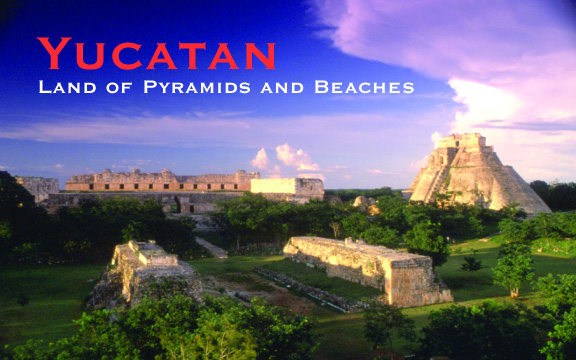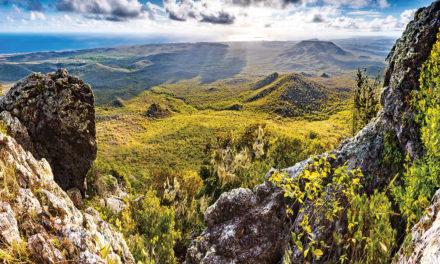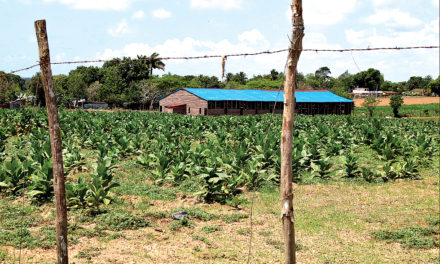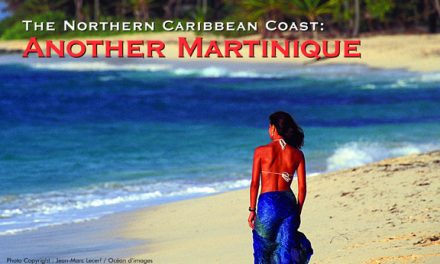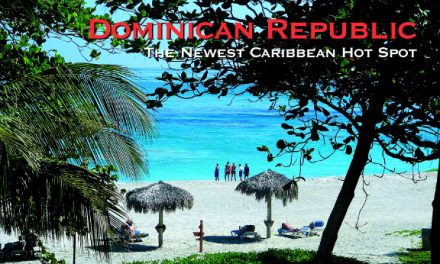Yucatan
Land of Pyramids and Beaches
By Greg James
Published in the February, 2004 Issue of Canadian World Traveller
Photos Courtesy of www.visitmexico.com
By the 19th century, the Yucatán Peninsular was already world-renowned for its archaeological treasures and for the War of the Castes, waged there between the indigenous people and the descendants of the European conquerors during the second half of that century.
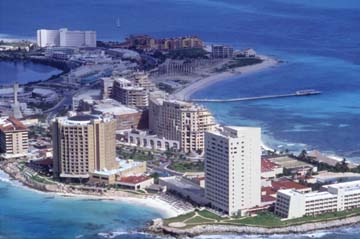 The archaeological findings in the area have been extremely important events and most of the tourists that come to this part of Mexico take the opportunity of visiting Chichén Itzá and Uxmal, perfect examples of the development achieved by the Mayans in that region.
The archaeological findings in the area have been extremely important events and most of the tourists that come to this part of Mexico take the opportunity of visiting Chichén Itzá and Uxmal, perfect examples of the development achieved by the Mayans in that region.
The lowlands of Yucatán, consisting of a plate of limestone rock, have many other attractions, such as the limestone sinkholes and warm beaches with fine white sand, such as Cancún and the Riviera Maya resort areas that few would want to miss.
Those interested in exploring the colonial era will find beautiful examples in Campeche and Mérida. Its warm climate, friendly people and sophisticated cuisine make this an extremely attractive resort.
Location & Climate
The Yucatán peninsula is located in the southeast of Mexico and is the most easterly part of the country. It juts out northward from the isthmus of Central America. The peninsula consists of three of Mexico’s states: Campeche, Quintana Roo and Yucatán. Located just 20 degrees north of the equator, the peninsula enjoys a tropical climate.
Mérida, the capital of the State of Yucatán that once occupied the entire peninsula separating the Caribbean from the Gulf of Mexico, lies 36 km south of Puerto Progreso and is an hour and a half’s flight from Mexico City and an hour’s flight from Miami. It has a hot, humid climate, with a maximum of 35ºC in May and a season of short, sharp rains between June and September.
The city is built on a large plain that vanishes into the horizon, without ever rising above 10 m above sea level, which enabled it to grow into an almost perfect square that is currently inhabited by half a million people.
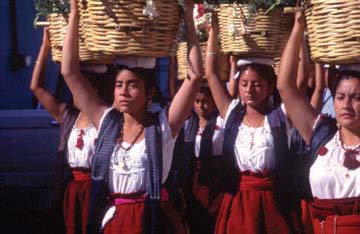 History & Culture
History & Culture
The majority of the present-day population of the Yucatan are descended from the Mayans, the builders of Uxmal and Chichén Itzá.
Although these cities had already been abandoned by the time the Spaniards arrived, the Conquest was delayed until 1542 here, when Governor Francisco Montejo founded Mérida, nearly twenty years after the fall of Teotihuacan.
The revolts that followed were compounded by pirate raids and in 1847, the Indians launched a “War of the Castes” against the whites that lasted until 1912.
During the last third of the 19th century, the henequen (Mexican hemp) industry dominated everything, creating immense fortunes and fostering backwardness, as a result of which the Revolution soon acquired a powerful social component in Yucatán. Following the henequen crisis, the state was diversified and nowadays tourism is one of its main activities.
The State of Campeche
The State of Campeche is part of the enormous plain comprising the Yucatán peninsula, which it shares with the States of Yucatán and Quintana Roo. It was inhabited by groups from the ancient Mayan culture, traces of which can still be seen in places like Edzná and Calakmul.
On the shores of the Gulf of Mexico, in what was once the Mayan city of Ah Kin Pech (“place of the sun”), Francisco de Montejo el Mozo ordered the construction of Villa de San Francisco de Campeche (present-day Campeche City).
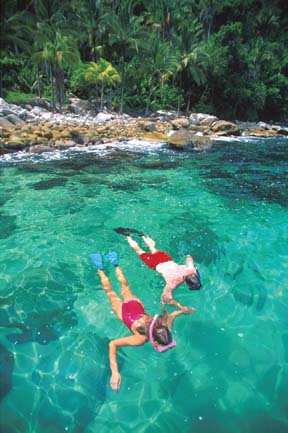 Owing to its strategic location on the Gulf, it suffered numerous pirate attacks, as a result of which a defense system of walls and forts was built, traces of which still remain, giving it its distinctive appearance.
Owing to its strategic location on the Gulf, it suffered numerous pirate attacks, as a result of which a defense system of walls and forts was built, traces of which still remain, giving it its distinctive appearance.
The state’s surroundings are tropical, and unlike its neighbors on the peninsula, it has several rivers, in addition to beaches, archaeological sites, colonial buildings, nineteenth-century haciendas and nature reserves with an astonishing variety of flora and fauna.
Campeche Places of Interest
Places of interest in the State of Campeche are: the City of Campeche, an ideal starting point for exploring the magical world of the Mayans; Calakmul, the largest Mayan city discovered to date, which was continuously inhabited for over three thousand years; and La Isla de Jaina, which lies on the coast north of Campeche.
La Isla de Jaina is famous for its Mayan ceremonial figurines and the Rio Bec style archaeological sites of Becán, Chicanná, Xpuhil, El Hormiguero and Edzná with its five-story pyramid and technologically advanced irrigation system.
The State of Quintana Roo
Quintana Roo is one of the youngest states in the country as well as the furthest east, meaning that it is the first Mexican state to see the sun come up every day. It is located in the Yucatán Peninsula, which it shares with Campeche and Yucatán, to the south it is separated from Belize and Guatemala by the Bay of Chetumal and Río Hondo, and to the east it is washed by the Caribbean.
This state contains some of the most spectacular sites in the Mayan world, such as Tulum, Cobá and Kohunlich. It also boasts modern beach resorts such as Cancún and Puerto Aventura, rustic ones such as Isla Mujeres and Akumal and traditional resorts such as Playa del Carmen. It makes up for its lack of surface rivers with an intricate system of underground rivers and limestone sinkholes that are ideal for diving. In fact, Cozumel is one of the best places in the world for diving and Banco Chinchorro’s bio-diversity is spectacular.
Sian Ka’an is the largest reserve in the state while Holbox is ideal for bird watching. It also has theme parks such as Xel-Há and Xcaret. The Mayan Zone, in the center of the state, is inhabited by Mayan communities descended from those that fought in the War of the Castes that have managed to preserve their ancient rites and traditions.
Quintana Roo Places of Interest
Places of interest in the State of Quintana Roo are: Cancún, one of the most important tourist complexes in Mexico and the world because of its superb location, its year-round mild climate, and its gorgeous, warm, sandy white beaches washed by the Caribbean sea; the beautiful island of Cozumel, the largest inhabited island in Mexico and a paradise for divers from all over the world because of its surrounding reef formations and vividly-coloured fish; and Playa del Carmen, the capital of the Riviera Maya, which evolved from a small village of Mayan pilgrims to a lively, cosmopolitan city.
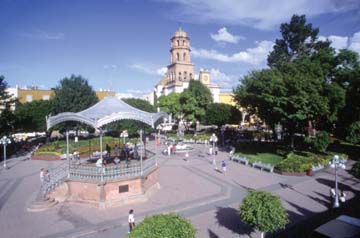 The State of Yucatán
The State of Yucatán
The State of Yucatán is the legendary land of the Maya. It is located in the north of the peninsula after which it is named and which it shares with the States of Campeche and Quintana Roo.
It is washed by the Gulf of Mexico in the north. Yucatán forms part of the Mayan world, vestiges of which can be found throughout its territory, particularly in Chichén Itzá and along the Puuc Route.
It also contains colonial cities such as Mérida, Valladolid and Izamal, as well as the remains of elegant sisal haciendas, some of which have been restored and converted into hotels. The state is dotted with Mayan villages whose handicrafts, religious rites, traditions and ancient customs contribute to its magical attraction.
The combination of its warm, sub-humid and warm, medium-dry climate have produced forest surroundings that support a wide range of fauna. The lack of surface rivers means that it obtains water from a complex system of underground rivers and limestone sinkholes. Yucatán also offers beaches, traditional fiestas, fairs and exquisite food.
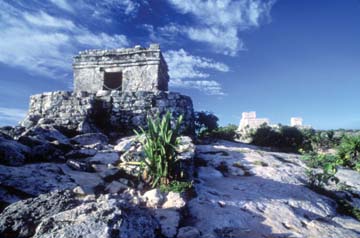 State of Yucatán Places of Interest
State of Yucatán Places of Interest
Places of interest in the State of Yucatán include Chichén Itzá, the fascinating Mayan city whose name means “the city of the water wizards”, located in the south of Mérida in the midst of fabulous natural surroundings where the deep blue skies contrast with the lush green vegetation.
Also of interest are the state capital Mérida, called the “White City”, with its colonial and Frenchified architecture, Mayan language, Caribbean atmosphere and original cuisine, and Uxmal and the Puuc Zone that still bears traces of its pre-Hispanic history and the extravagance of the henequen haciendas.
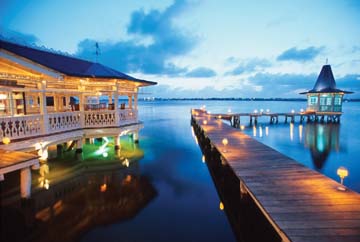
Currency & Exchange
The currency used is the Mexico peso. In February 2004, the peso was valued at approximately $0.12 Cnd.
Visas & Vaccinations
Canadian citizens do not need a visa to travel to Mexico, but they do require a tourist card.
This may be obtained at any Mexican consulate, during direct flights to Mexico or at the Mexican port of entry by presenting a valid Canadian passport or proof of citizenship and photo ID. Canadian visitors do not require vaccinations.
For More Info:
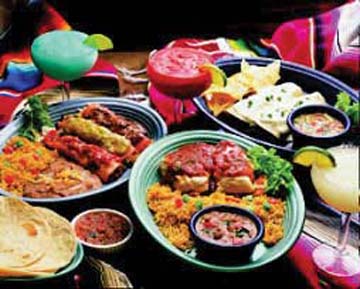 Mexican Tourism Board
Mexican Tourism Board
1 Place Ville Marie, Suite 1931
Montreal QC H3B 2C3
Tel. (514) 871-1052
Fax: (514) 871-3825
E-mail: montreal@visitmexico.com
www.visitmexico.com
Embassy of Mexico
45 O’Connor Street, Suite 1500
Ottawa, ON K1P 1A4
Tel.: 613-233-8988, -9272, -9917
Fax: 613-235-9123
Email: info@embamexcan.com
www.embamexcan.com
Mexicana Airlines
1010, rue Sherbrooke O, Bureau 1408
Montréal, QC H3A 2R7
Tel: (514) 487-0685
E-mail: See Website
www.mexicana.com

